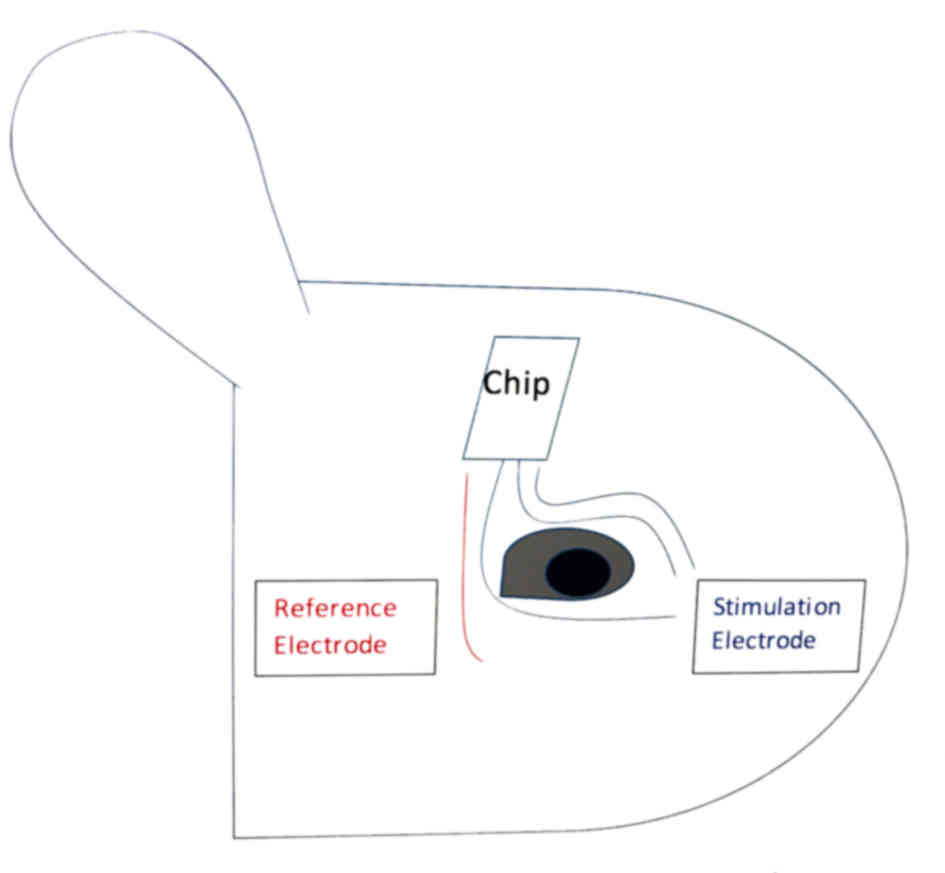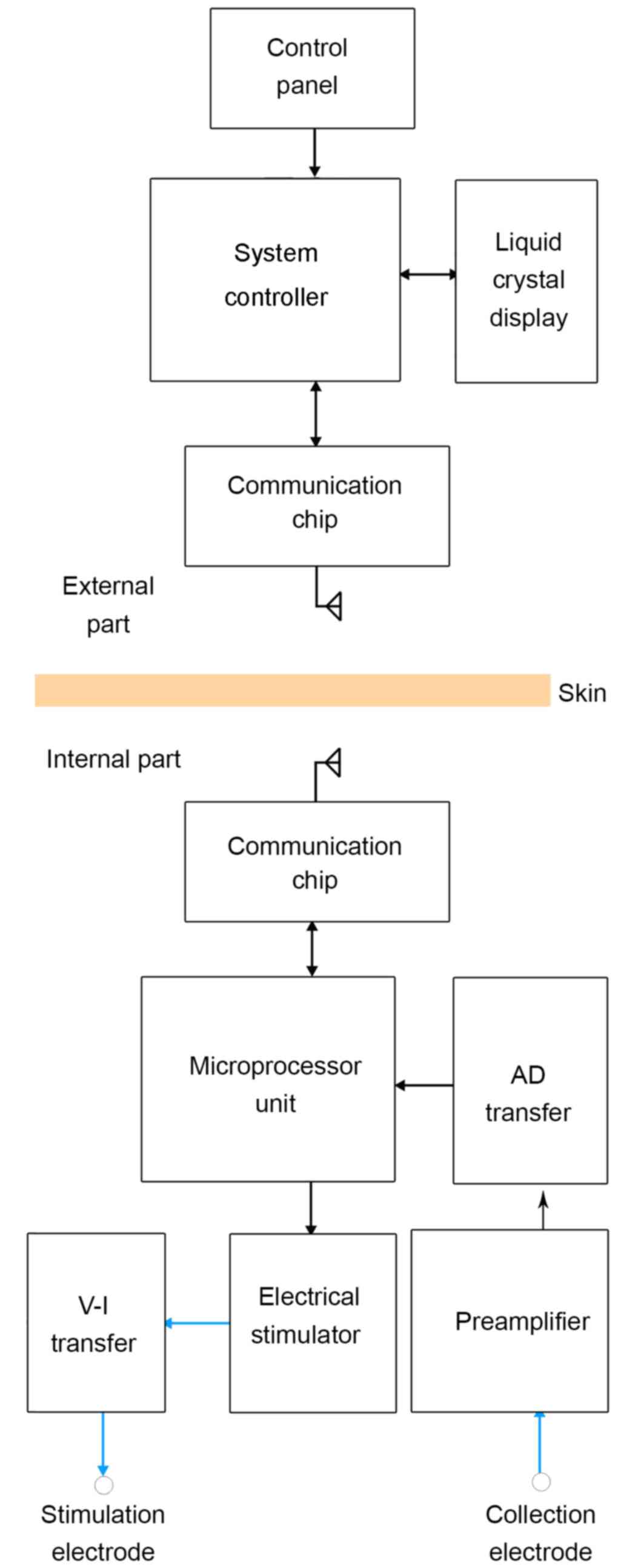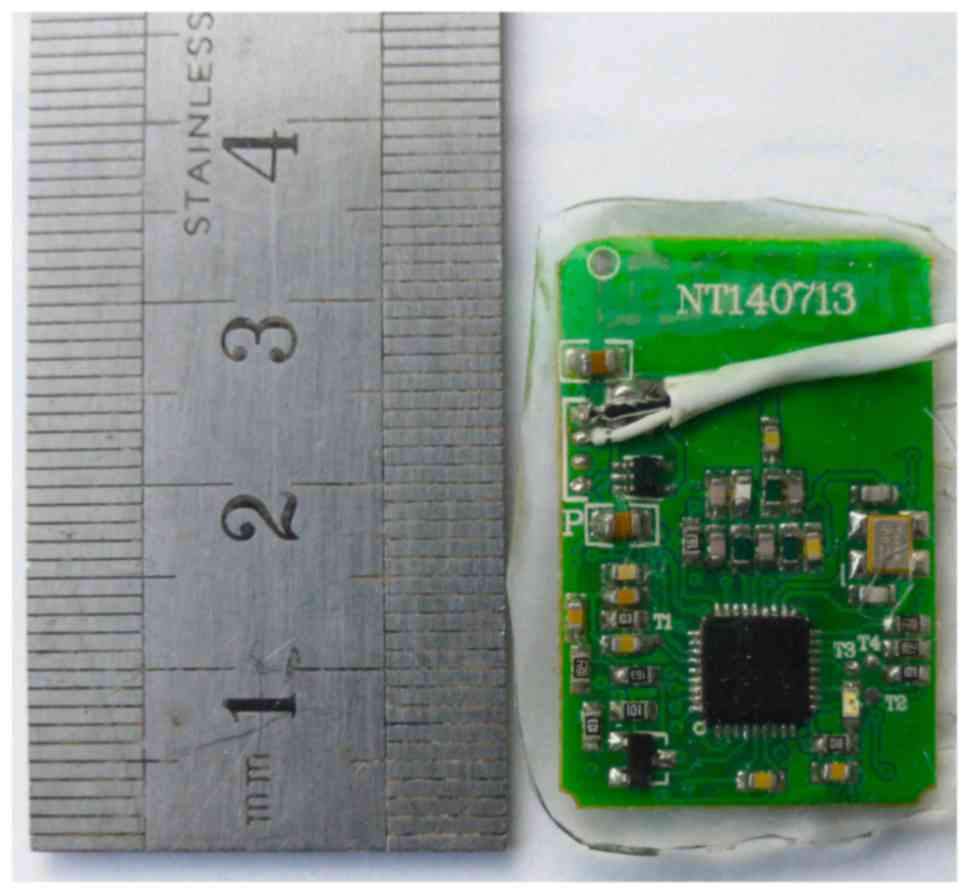Restoration of orbicularis oculi muscle function in rabbits with peripheral facial paralysis via an implantable artificial facial nerve system
- Authors:
- Published online on: September 29, 2017 https://doi.org/10.3892/etm.2017.5223
- Pages: 5289-5296
-
Copyright: © Sun et al. This is an open access article distributed under the terms of Creative Commons Attribution License.
Metrics: Total
Views: 0 (Spandidos Publications: | PMC Statistics: )
Total PDF Downloads: 0 (Spandidos Publications: | PMC Statistics: )
Abstract
The purpose of the present study was to restore orbicularis oculi muscle function using the implantable artificial facial nerve system (IAFNS). The in vivo part of the IAFNS was implanted into 12 rabbits that were facially paralyzed on the right side of the face to restore the function of the orbicularis oculi muscle, which was indicated by closure of the paralyzed eye when the contralateral side was closed. Wireless communication links were established between the in vivo part (the processing chip and microelectrode) and the external part (System Controller program) of the system, which were used to set the working parameters and indicate the working state of the processing chip and microelectrode implanted in the body. A disturbance field strength test of the IAFNS processing chip was performed in a magnetic field dark room to test its electromagnetic radiation safety. Test distances investigated were 0, 1, 3 and 10 m, and levels of radiation intensity were evaluated in the horizontal and vertical planes. Anti‑interference experiments were performed to test the stability of the processing chip under the interference of electromagnetic radiation. The fully implanted IAFNS was run for 5 h per day for 30 consecutive days to evaluate the accuracy and precision as well as the long‑term stability and effectiveness of wireless communication. The stimulus intensity (range, 0‑8 mA) was set every 3 days to confirm the minimum stimulation intensity which could indicate the movement of the paralyzed side was set. Effective stimulation rate was also tested by comparing the number of eye‑close movements on both sides. The results of the present study indicated that the IAFNS could rebuild the reflex arc, inducing the experimental rabbits to close the eye of the paralyzed side. The System Controller program was able to reflect the in vivo part of the artificial facial nerve system in real‑time and adjust the working pattern, stimulation intensity and frequency, range of wave and stimulation time. No significant differences in the stimulus intensities were observed during 30 days. The artificial facial nerve system chip operation stable in the anti‑interference test, and the radiation field strength of the system was in a safe range according to the national standard. The IAFNS functioned without any interference and was able to restore functionality to facially paralyzed rabbits over the course of 30 days.












